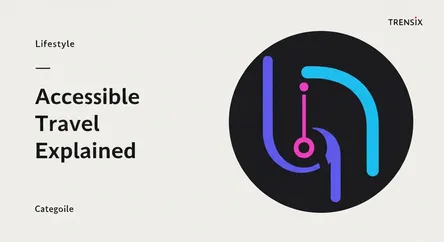Lifestyle
Accessible Travel Explained

Discover accessible travel, the movement making tourism inclusive for people with disabilities, mobility issues, and other access needs. Learn why.
What is it?
Accessible travel, also known as inclusive or barrier-free tourism, is the practice of ensuring that destinations and travel services are usable by all people, regardless of their physical disabilities, limitations, or age. This encompasses everything from wheelchair-accessible transportation and accommodation to providing information in formats like Braille or offering sensory-friendly experiences for individuals with autism. The goal is to create an environment where everyone can travel with independence, equity, and dignity.
Why is it trending?
The rise of accessible travel is driven by a growing global awareness of disability rights and social inclusion. An aging global population with increasing mobility needs is a significant factor, creating a larger market for accessible options. Furthermore, social media platforms have empowered travelers with disabilities to share their experiences, highlighting shortcomings in the industry and demanding change. Tourism boards and businesses are now recognizing not only the ethical imperative but also the substantial economic opportunity in catering to this underserved market.
How does it affect people?
For individuals with disabilities, accessible travel breaks down significant barriers, transforming travel from a stressful ordeal into an enriching possibility. It fosters independence and enables participation in cultural and recreational activities that were previously out of reach. For the travel industry, embracing accessibility opens up a loyal and growing customer base. On a societal level, it promotes a more inclusive and empathetic worldview, reinforcing the idea that the joy and benefits of travel should be a universal right for everyone.